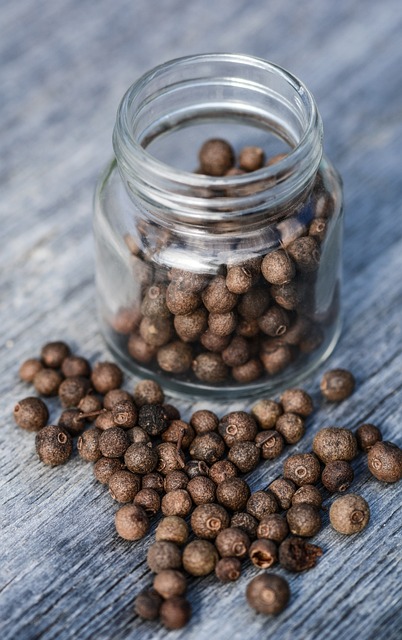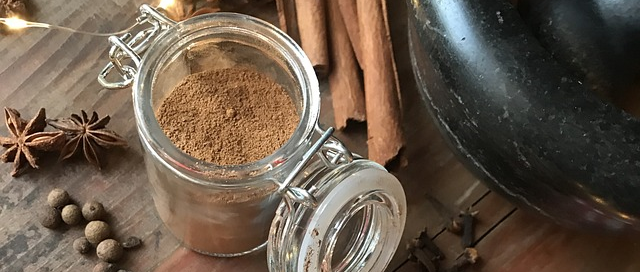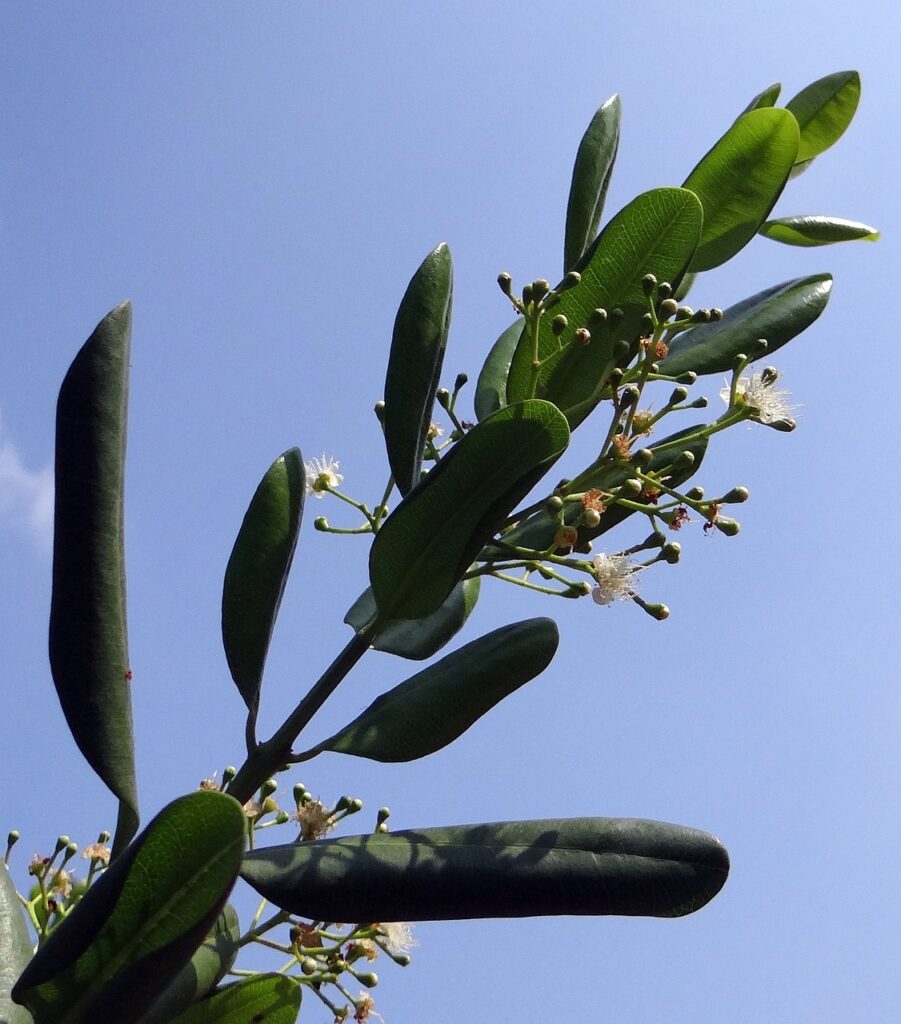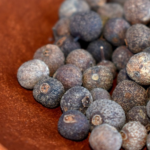Today, we’re taking a deep dive into one of the hidden treasures of the spice world: Allspice. One of my favourite spices with its unique and complex flavours, the use of plural form definitively intended here. This unique spice, often overlooked, has a lot to offer in terms of flavour, health benefits, and usage in various cuisines. So, prepare yourself for an aromatic journey into the world of Allspice.
What is Allspice?
Allspice, also known as Jamaica pepper, myrtle pepper, pimenta, or pimento, is a unique spice that has carved out its niche in the culinary world. It has intrigued palates and enriched cuisines around the world. Despite its name suggesting a blend of spices, allspice is a single spice derived from the dried unripe berry of the Pimenta dioica, a midcanopy tree native to the Greater Antilles, southern Mexico, and Central America.
Allspice is derived from the dried unripe berries of the Pimenta dioica plant. The berries are picked when they are green and full of essential oils, then sun-dried until they adopt a reddish-brown hue. The result? A spice that brings a warm, sweet, and slightly peppery essence to your culinary creations.

The name “allspice” was coined as early as 1621. The name was chosen because its taste is said to resemble a combination of several other spices, such as cinnamon, nutmeg, and cloves. This unique flavour profile led to the English naming it “allspice”, as they valued it as a spice that combined the taste of all these spices. Despite its name, it is important to note that allspice is not a blend of different spices, but a single-ingredient seasoning derived from the dried berries of the Pimenta dioica tree. It’s fascinating how one spice can encapsulate the flavours of so many others!
Culinary uses around the world
Allspice is one of the most essential ingredients of Jamaican cuisine. Under the name pimento, it is used in Jamaican jerk seasoning. In the West Indies, an allspice liqueur is produced under the name “pimento dram”. In Mexican cuisine, where it is known as pimienta gorda, it is used in many dishes.
Allspice is a key component in many Middle Eastern dishes, particularly in the Levant, where it is used to flavour various stews and meat dishes. Allspice is often used in its ground form, which beautifully melds with the region’s rich, savoury dishes. It’s a common ingredient in spice mixes such as “7 Spices” and “Baharat”, a blend used throughout the Middle East. Baharat, which literally means “spices” in Arabic, varies from region to region and family to family, but Allspice often holds a prominent place in the mix. This flavourful blend is used to season meats, meat and rice stuffings, marinades, and sometimes even in sweet dishes.
In Northern European and North American cooking, it is an ingredient in commercial sausage preparations and curry powders, and in pickling.
In the United States, it is used mostly in desserts, but it is also responsible for giving Cincinnati-style chili its distinctive aroma and flavour. Allspice is commonly used in Great Britain and appears in many dishes. In Portugal, whole allspice is used heavily in traditional stews cooked in large terracotta pots in the Azores islands.
I have not found any reference to the use of Allspice in Asian cuisine, please write me if you know about the subject and I will gladly add to this post.

The Production of Allspice

The production of allspice is a meticulous process that begins with the cultivation of the allspice tree, scientifically known as Pimenta dioica. These trees are native to the Caribbean region and thrive in tropical climates with well-drained, fertile soil. They can reach heights of up to 9 meters (30- 40 feet) and are characterized by their glossy, aromatic leaves and small, fragrant flowers.
The cultivation of allspice trees typically begins with the careful selection of suitable planting sites. Farmers often seek out locations with ample sunlight and protection from strong winds, as these factors can significantly impact the growth and development of the trees. Once the ideal site is chosen, the process of planting allspice trees begins, often involving the use of seedlings or cuttings from mature trees.
Allspice trees require regular care and maintenance to ensure optimal growth and productivity. This includes providing adequate irrigation, controlling weeds, and protecting the trees from pests and diseases. Additionally, periodic pruning is essential to shape the trees and promote healthy branching, which can ultimately contribute to higher yields of allspice berries.
The allspice berries are picked when they are green and unripe. They are then traditionally dried in the sun. During drying, the berries turn from green to a dull reddish brown. Care must be taken during drying to ensure that volatile oil, such as eugenol, remains in the end products.
Once dried, the allspice berries resemble large, smooth peppercorns. They can be sold whole or ground into a powder. The grinding process should be done carefully to preserve the rich aroma of the allspice.
Quality control is a crucial aspect of allspice production. It ensures the highest standards are met, from the cultivation of the trees to the harvesting, drying, and processing of the berries. This meticulous attention to detail throughout the production process is what makes allspice a beloved and versatile spice in cuisines around the world.
Origin and History
The origins of Allspice can be traced back to the pre-Columbian era in the Caribbean and Central America, particularly in Jamaica, where it grew wildly. The indigenous Arawak and Carib peoples recognized the culinary and medicinal potential of Allspice and made it an integral part of their lifestyle. They used it for seasoning, preservation, and even embalming.
Christopher Columbus is credited with bringing Allspice to Europe during his second voyage to the New World in the 15th century. It was mistakenly identified as a type of pepper, hence its other name, ‘Jamaica pepper.’
During the 17th century, the English, recognizing the rich flavour profile of the spice (reminiscent of cinnamon, clove, and nutmeg), named it ‘Allspice.’ Around the same time, large scale cultivation of the plant began in Jamaica, which remains the leading producer of the highest quality Allspice today.
In the 18th century, Allspice became popular in English and French cooking. It was used in a variety of dishes, from desserts like cakes and puddings to savoury dishes including soups and stews. It was even used to flavour beverages such as mulled wine.
Allspice also has a history in traditional medicine. In various cultures, it has been used to treat digestive issues, as a muscle relaxant, and for dental hygiene due to its antimicrobial properties.
During the Napoleonic Wars, Russian soldiers used Allspice to keep their boots and uniforms free from bacteria and fungus, and to keep them smelling good. This led to the spice becoming a common ingredient in Russian men’s cologne.
The spice continued to spread across the globe, influencing cuisines from the Middle East to Scandinavia. Despite its global reach, Allspice has remained true to its roots, still playing a significant role in Caribbean cuisine, particularly in Jamaican dishes like jerk chicken.
Nomenclature of Allspice
Allspice has garnered a multitude of names in various languages, each reflecting the unique cultural contexts in which it is used. From the Spanish “pimienta de Jamaica” to the French “piment de la Jamaïque,” the names for allspice reflect its historical ties to the Caribbean and the influence of colonial trade routes on its dissemination.
| Italy | Pepe de Giamaica / Pimento |
| Germany / Switzerland (DE) | Piment / Jamaikapfeffer or even Nelken |
| Lebanon / Syria | بهار حلو (sweet pepper/spice) |
| Hindu | सारे मसाले (saare masaale) |




Leave a Reply